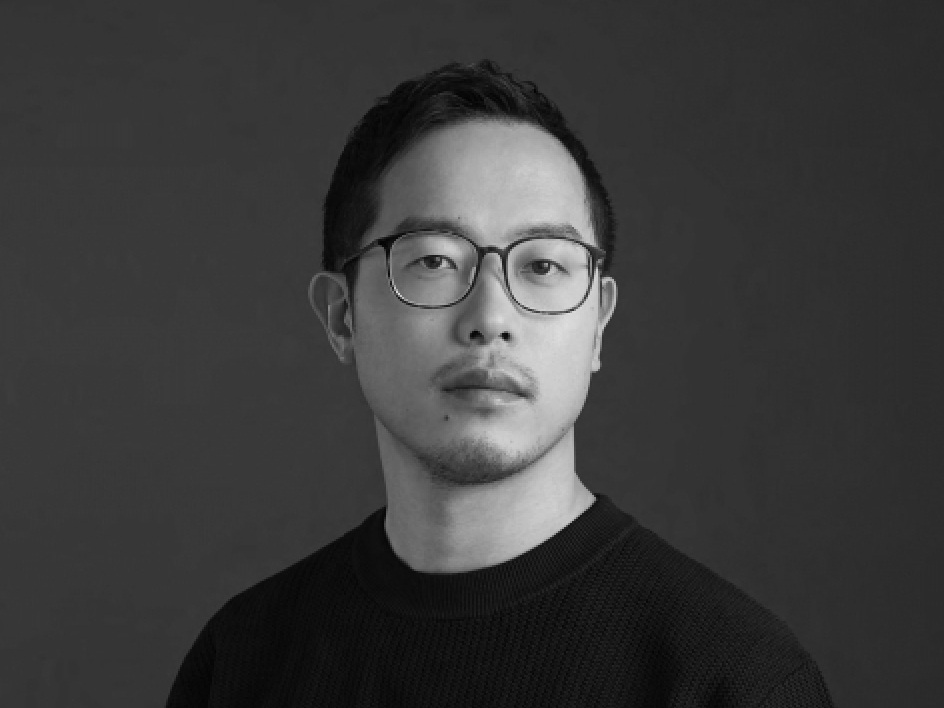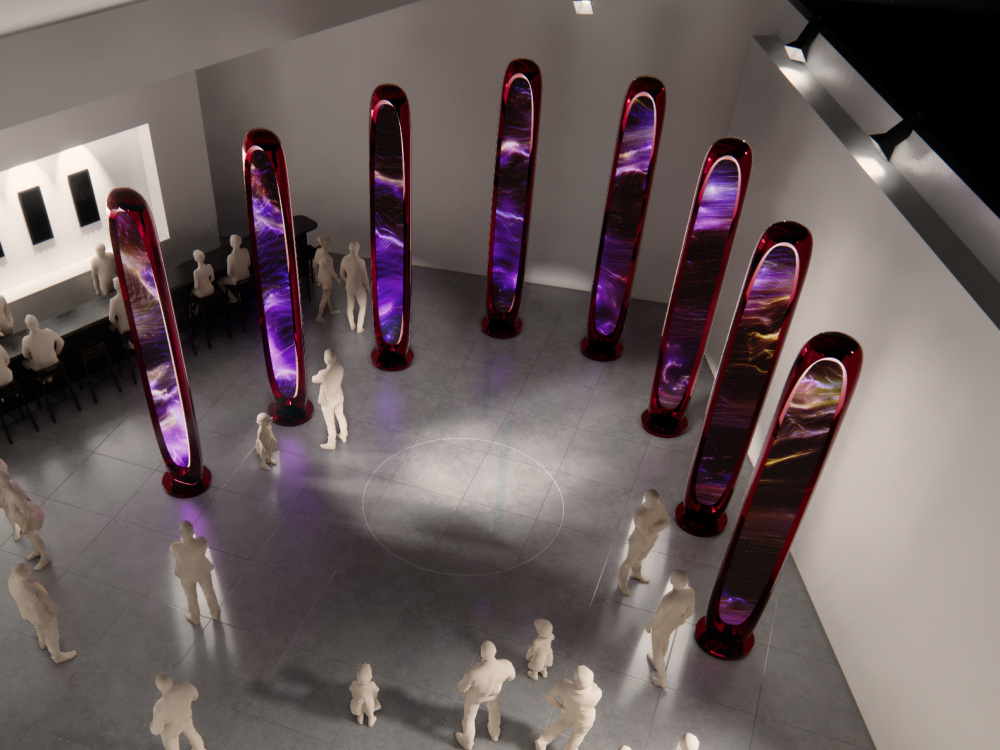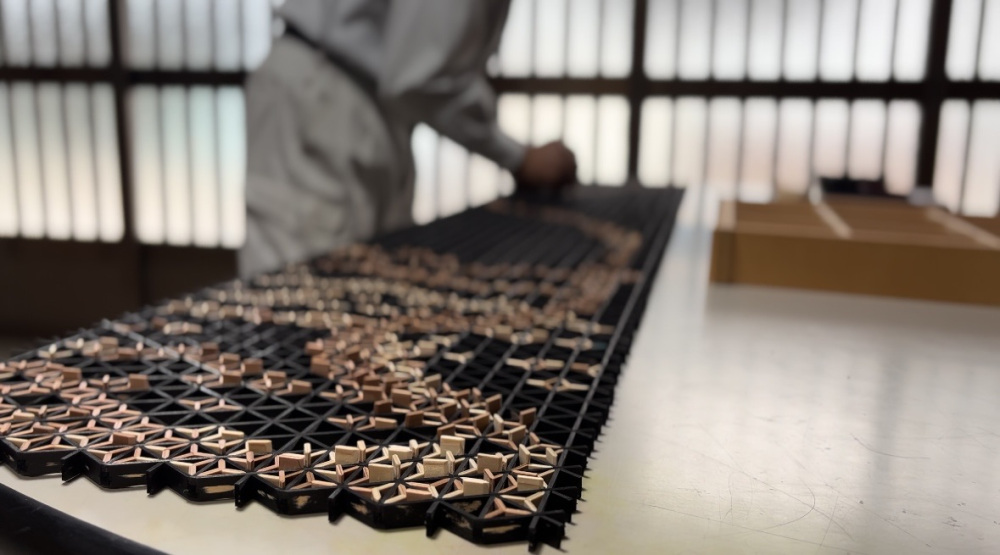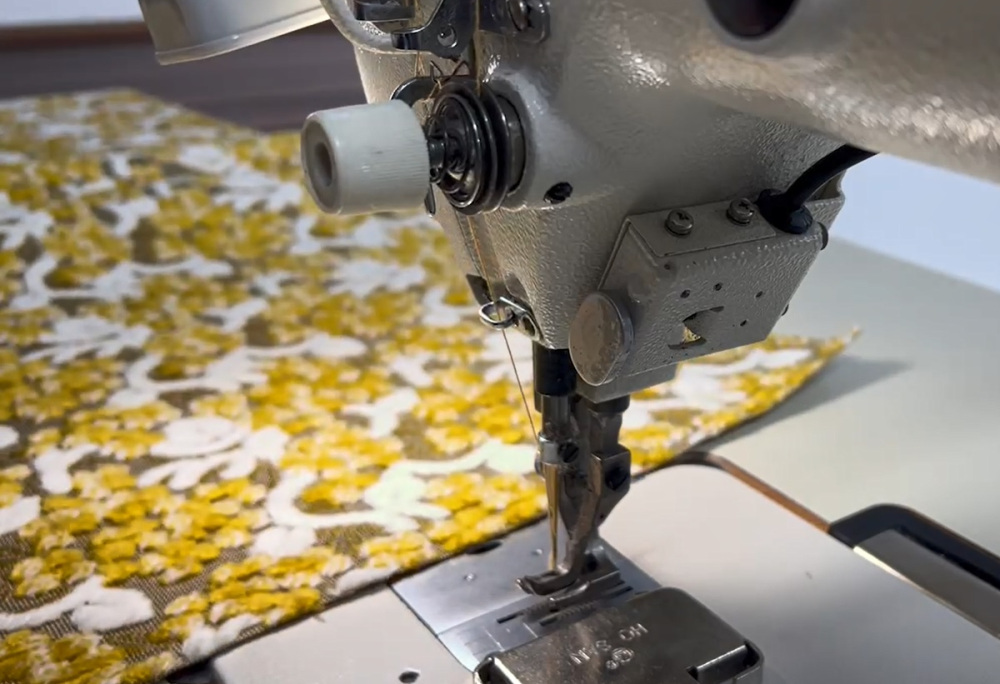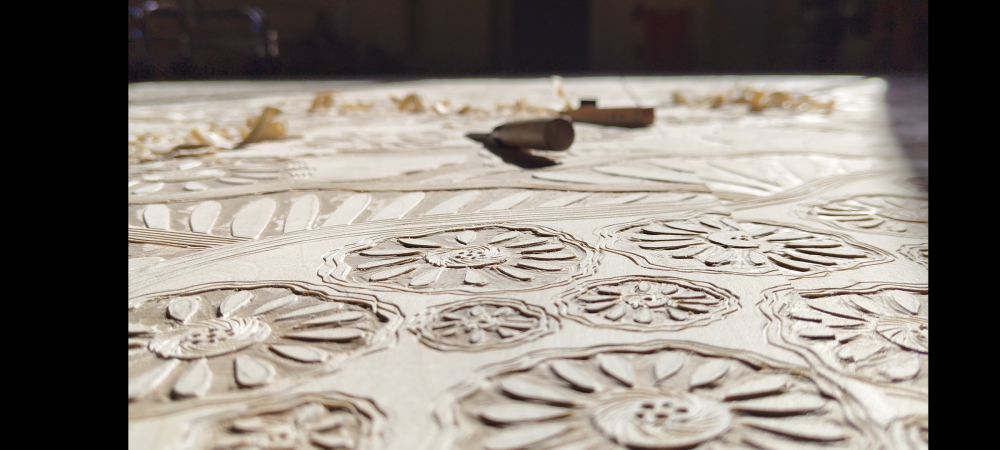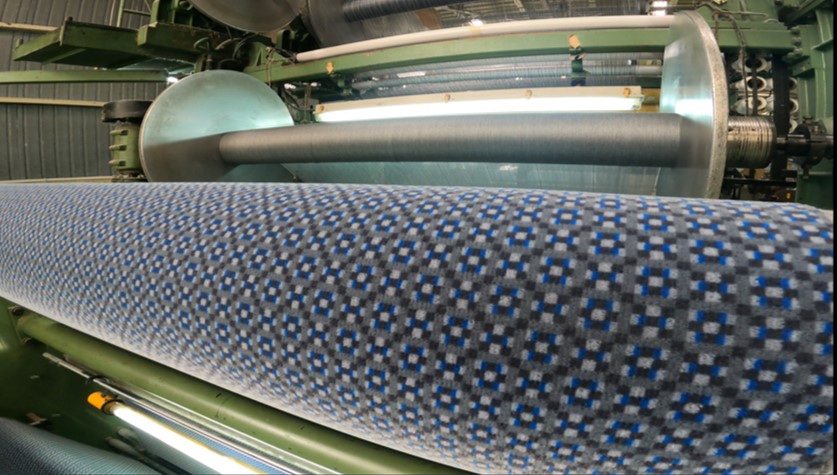Wakayama Zone: Space
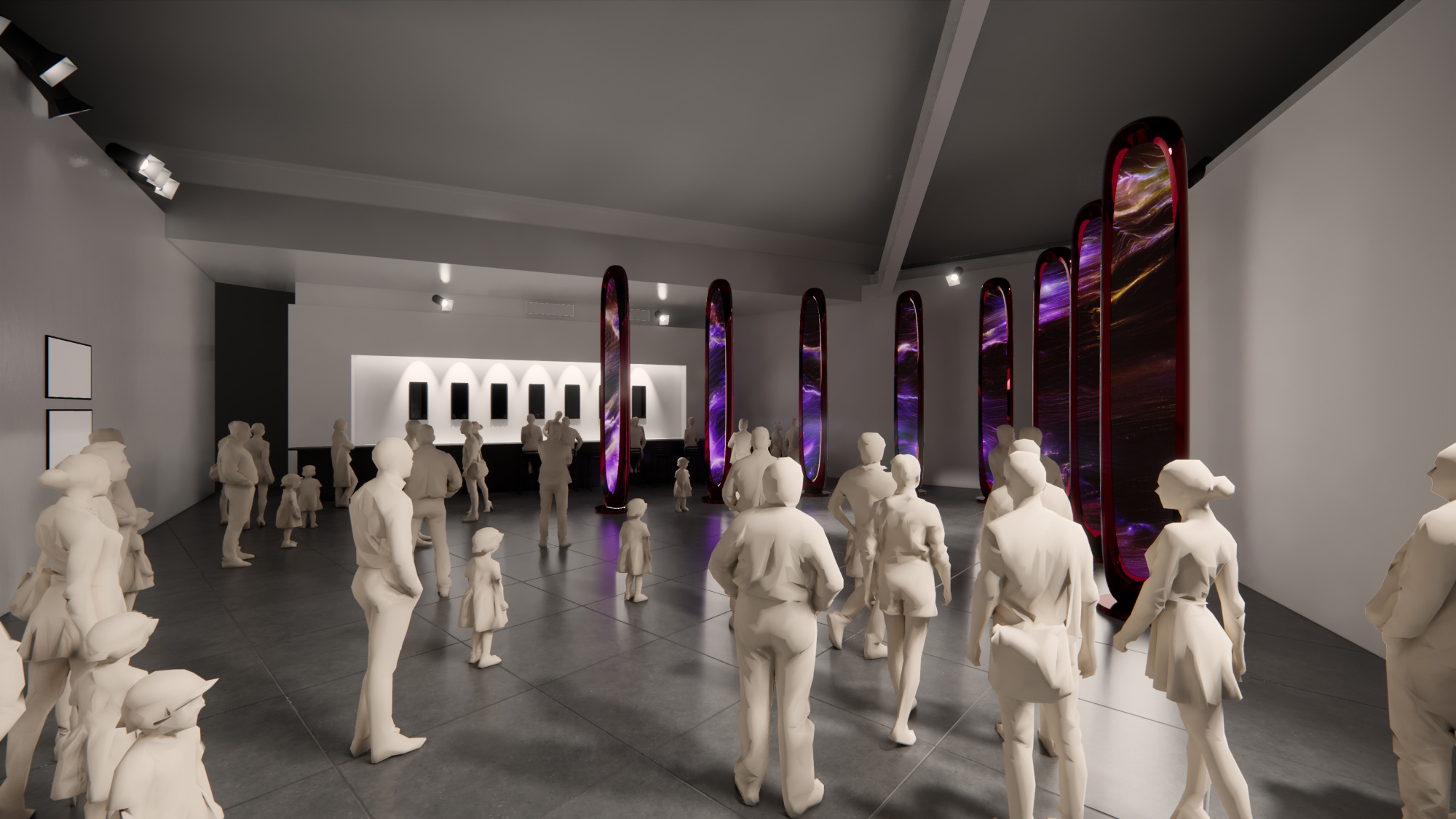
Wakayama Zone: Space
Space: The Finest Quality of Wakayama
Within the Kansai Pavilion, a space embodying Wakayama is brought to life.
"Totem," a video installation evoking the giant trees of the Kii Mountains, is finished with traditional Kishu Lacquerware, and the table and chairs for the dining experiences are crafted from Kishu Wood. The various elements that comprise the space incorporate materials and traditional techniques unique to Wakayama, while expressing a level of refinement that resonates on a global scale.
Hideki Yoshimoto
Hideki Yoshimoto was born in Wakayama Prefecture in 1985. He earned an MS degree in Aeronautics and Astronautics from the University of Tokyo in 2010 and a PhD in Innovation Design Engineering from the Royal College of Art in the UK in 2016. He Founded the design studio Tangent in London in 2015. In 2020, he co-founded the Advanced Art Design Lab at the University of Tokyo’s Research Center for Advanced Science and Technology, further expanding activities between London and Tokyo. He specializes in the progressive fusion of design and engineering, and has contributed designs and concepts to numerous global luxury brands. His work also spans a wide range of fields, from technology-driven new business development to urban planning. In recent years, he established the international initiative "Craft x Tech", which connects traditional Japanese craftsmanship with cutting-edge technology. As an individual artist, he also actively creates artworks in collaboration with traditional artisans, engaging in the evolution and preservation of Japanese culture.
Elements Comprising the Space
- "Totem" – A Visual Installation Finished with Traditional Kishu Lacquer
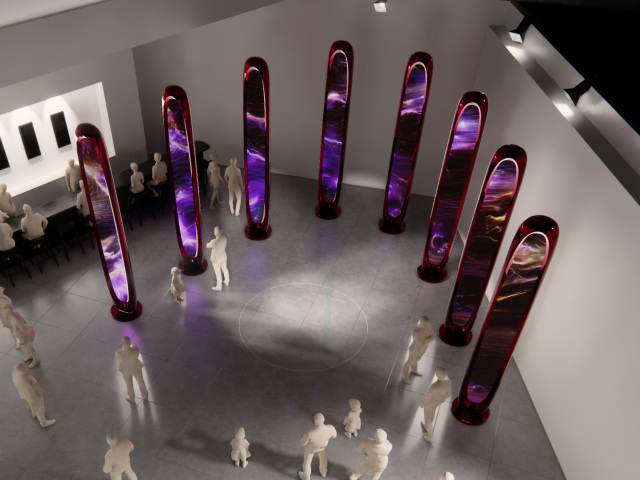
- View more
- Tabletop and Chairs made from Kishu Timber
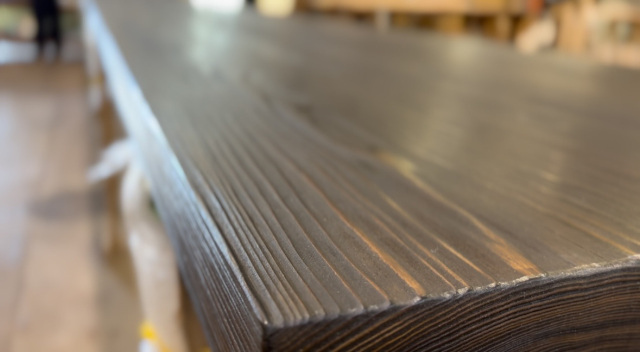
- View more
- Paulownia wood vessels for serving wagashi
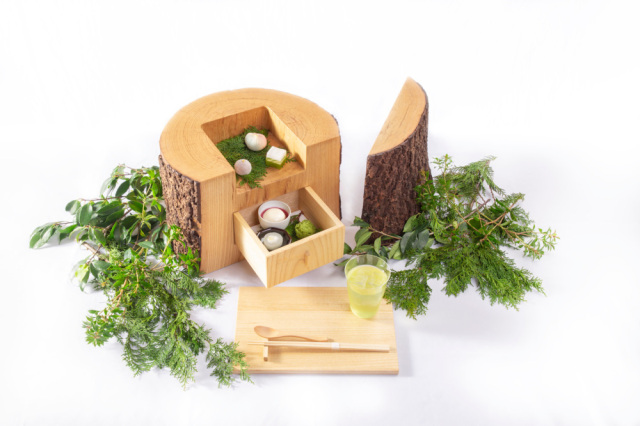
- View more
- Pressed Flower Art
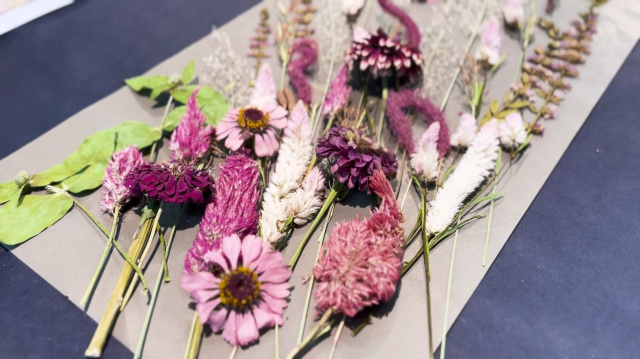
- View more
- Kishu Koya Kumiko Latticework
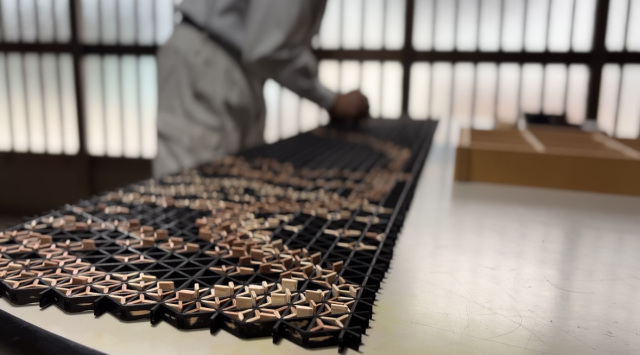
- View more
- Koyaguchi Pile Sofas
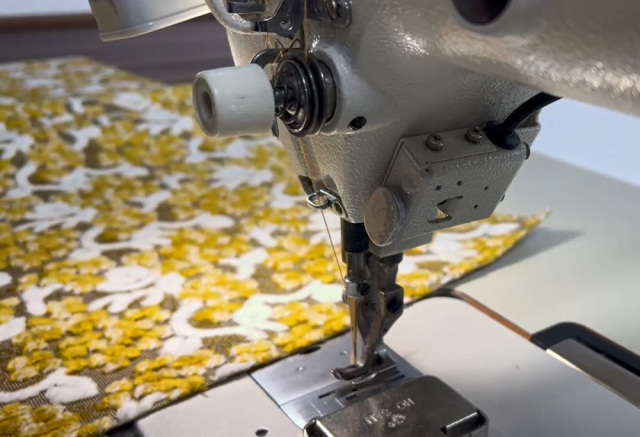
- View more
- Print by Local Wakayama Artisan
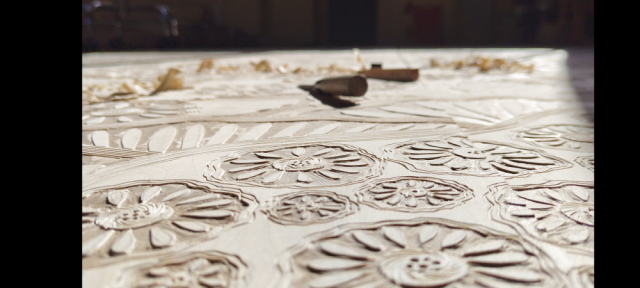
- View more
- Attendant Uniforms
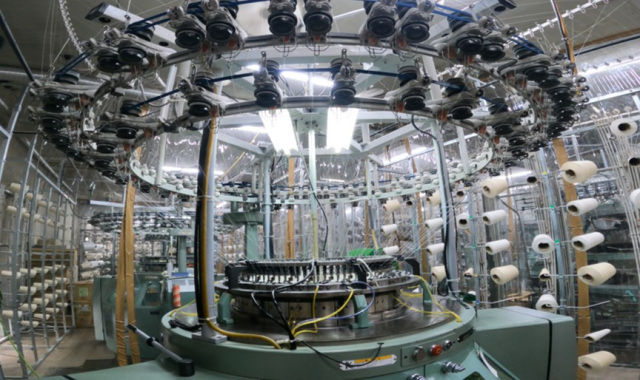
- View more
"Totem" – A Visual Installation Finished with Traditional Kishu Lacquer
A towering visual installation of eight massive towers, "Totem", vividly evokes the image of ancient giant trees standing deep within the forests of the Kii Mountain Range. As a symbol of the Wakayama Zone, these towers themselves are masterpieces, finished with Kishu lacquer, one of Wakayama’s traditional crafts. Kishu lacquerware is counted among Japan’s three great lacquerware traditions, alongside Aizu lacquerware from Fukushima Prefecture and Yamanaka and Wajima lacquerware from Ishikawa Prefecture. Produced primarily in the Kuroe district of Kainan City, it is also known as Kuroe lacquerware. Its origins trace back to the Muromachi period (approx. 1336 to 1573), when Kishu woodworkers crafted Shibuchi bowls, with the craft flourishing even further during the Edo period (1603 to 1868). Following the Meiji era (1868 to 1912), there was a period when the craft seemed to be in decline. However, advancements and the adoption of techniques, including maki-e (gold lacquer decoration), have allowed it to remain a proud representative of Wakayama’s high-quality traditional craftsmanship, embodying the "Finest Quality of Wakayama."
Kishu Lacquerware Cooperative Association (External Link)
Tabletop and Chairs Made from Kishu Timber
In the "Dining Area" located at the back of the Wakayama Zone, a counter table and chairs, lavishly crafted from Kishu timber, one of Wakayama’s prized materials, stand with quiet elegance. Approximately 76% of Wakayama’s land is covered by forests, and its ancient name, "Ki-no-Kuni" (Land of Trees / 木の国), is believed to have evolved into "Ki-no-Kuni" (Kishu Province / 紀の国). Harvested from the sacred Kii Mountain Range, Kishu timber is known for its rich grain, warm texture, and refreshing fragrance. Beyond being a simple building material, it is used for a wide range of applications. The 9-meter-long counter table, enhanced with the yakisugi (charred cedar) technique to create a bold presence, and uniquely designed chairs unlike any before, showcase the true potential of Kishu timber.
Paulownia wood vessels for serving wagashi
In the Wakayama Zone, wagashi (Japanese confectionery) is served in vessels made with the same techniques used to craft Kishu kiri tansu (paulownia wood chests).
The tableware was produced by Fukutaro Azuma, a Master of Traditional Crafts based in Kinokawa City, Wakayama Prefecture.
At first glance, the vessel appears to be a mere log stump, but it is in fact a vessel that allows you to experience the world of kiri tansu, which are meticulously calculated and crafted down to the nearest 1/100 mm.
The concept behind the wagashi pairing set offered is, “Partake of the forest.”
Kiri tansu are designed as sophisticated luxury items, but this vessel is boldly presented with a rough and primitive appearance, encasing the delicate wagashi in techniques backed by tradition.
The high quality dining experience that Wakayama Prefecture aims to offer is completed by these special vessels.
- Paulownia wood tableware produced by Kagunoazuma Inc.(Kinokawa City)(External Link)
Children's Pressed Flower Art
Display Fixtures Adorned with Kishu Koya Kumiko Latticework
This display fixture, designed to showcase various works, is adorned with Kishu Koya kumiko latticework, a traditional craft of Wakayama. Kumiko is a traditional decorative technique in which finely split wooden pieces are meticulously assembled by hand into geometric patterns without the use of nails. Kishu Koya Kumiko originated from techniques brought to Mt. Koya from Kyoto during the Edo period, which were later inherited and refined by local artisans. Using the six sacred woods of Koya—pine, fir, hemlock, cedar, cypress, and umbrella pine—this craft has expanded beyond geometric patterns with new techniques to create motifs such as mountains and waves. This particular piece was created by Shuho Ikeda, a Wakayama Prefecture Master Craftsman Award recipient, who utilized his unique techniques to depict the Great Pagoda (Konpon Daito), built as a symbol of Shingon Esoteric Buddhism in the sacred mountain site of Koya, along with the surrounding mountains and their cosmic worldview.
Koyaguchi Pile Sofas
"Koyaguchi pile" is a collective term for pile textiles and knit fabrics produced in the former Koyaguchi Town of Wakayama Prefecture. In the Wakayama Zone, cube-shaped sofas made from Koyaguchi pile are being featured. The name Koyaguchi comes from its historical role as an entrance point for pilgrims traveling to Mt. Koya (with the name literally meaning "Entrance to Mt. Koya"), dating back to the late Heian period (794 to 1185). The region also has a long history as a textile production area, beginning with Kawakami cotton, a fabric woven by farming wives in the Edo period (1603 to 1868) for their own use. As a side business in farming villages with limited arable land, textile production became an important industry, and was further encouraged by the Kishu Domain’s support for cotton cultivation. In the Meiji era (1868 to 1912), local innovator Yasusuke Maeda developed a special weaving technique called "Sai-ori", inspired by Scottish chenille weaving. By the early Taisho period (1912 to 1926), further technological advancements led to the development of pile textiles. In recent years, Kobayashi pile has also attracted attention for its eco-friendly faux fur material that imitates natural fur, and is being used by high-end brands both in Japan and abroad.
Print by Local Wakayama Artisan
One of the walls in the Wakayama Zone – standing 4 meters high and 6 meters wide – is adorned with the artwork of Kyoko Vendome, an artist residing in Wakayama Prefecture. Captivated by the natural beauty of Kumano, Vendome is a printmaker who relocated from Chiba Prefecture to Kumanogawa Town in Shingu City, Wakayama. In addition to her work as a printmaker, she also serves as a mountain guide and storyteller, sharing the rich heritage of Kumano. Her art, inspired by Kumano’s landscapes, is bold, powerful, and leaves lasting impressions on viewers. For this piece, Vendome prominently features Yatagarasu, the revered guiding deity of Kumano and a frequent motif in her work. Overlooking Wakayama’s mountains and sea, depicted in a variety of artistic expressions, Yatagarasu radiates a warm presence like the sun, watching over the land. This is the "Universe of Wakayama" as seen through the eyes of a printmaker living in Kumano.
Attendant Uniforms
The attendant uniforms that greet visitors are made using Wakayama knit. Wakayama Knit is primarily produced using circular knitting machines, where knitting needles are arranged in a circular pattern. This technique results in fabrics that are exceptionally stretchy and soft, distinguishing them from other types of knitwear. The uniform design takes advantage of these qualities, featuring a relaxed silhouette in a coordinated set-up style for both top and bottom. The accompanying bags are made from Koyaguchi Pile, a fabric known for its high elasticity, durability against friction, and incredibly soft texture – so smooth that it is often mistaken for real seal fur. These bags have a luxurious feel, making them irresistibly pleasant to touch.
